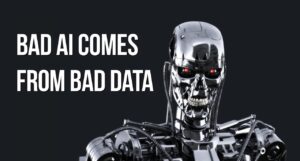 The biggest tech story of the week flew under the radar.
The biggest tech story of the week flew under the radar.
That was the collapse of enterprise software stocks. Salesforce.com fell 20% after earnings and other names like Adobe, ServiceNow, and Snowflake fell in sympathy. On Friday Dell followed.
It wasn’t the numbers. It was the “guidance,” the story these companies were telling about future demand. TV analyst Jim Cramer, previously a huge Salesforce fan, said the new conventional wisdom is that companies are holding off on software investment, waiting for what AI can do.
This makes no sense. It’s in enterprise software, like Salesforce’s Einstein and Adobe’s Creative Cloud, that AI is delivering value today. If companies are waiting for something before acting, it’s because they’re buying the Fear, Uncertainty and Doubt (FUD) of companies like OpenAi, who insist that “Artificial General Intelligence” is just around the corner.
It’s not.
Generative AI is an extension of database computing. It’s what Salesforce and rivals like Oracle have been doing for decades. The difference is that the database is larger, and the outputs are more varied. There’s also a larger process between the database and the user, a Large Language Model (LLM) defining what will be done, and an Inference Engine that responds to queries.
Companies like Salesforce and ServiceNow have already taken this ball and run with it. They deliver first level support, handling most common questions from customers and executives. As I’ve said, when Karen demands to speak to the manager you still need a manager. But the people between Karen and that manager can now do other things.
Where We Go

The investment required for AI, unlike that required for the Web 30 years ago, goes into the front end. You spend a lot to get the result, and hope the result is worthwhile. The Cloud Czars have been spending because they have the cash flow. Most companies can’t fund this work. That’s the hiccup in the market.
Meanwhile OpenAI and the Cloud Czars sell FUD. It reminds me of 40 years ago, when Microsoft spent 4 years promising Windows would do what the Apple Macintosh already did, while millions of office workers kept using command lines. What we’re seeing are a lot of demos that look impressive, but don’t deliver value on the back end.
Something else I remember from 40 years ago. This was the mini tech recession that accompanied the FUD. That’s what may be starting now. It’s possible we’re entering the trough of disillusionment every new technology faces.
If that’s the case, hold on to your assets.










